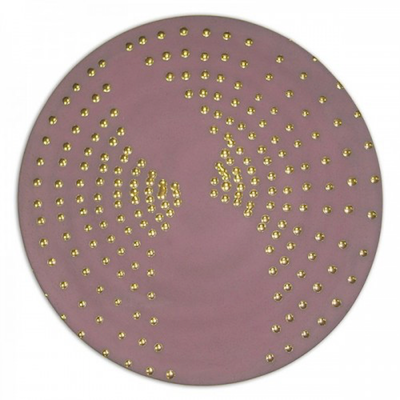
Details
Artist
Styles
12 Multiples Terragraphs on canvas mounted on wood in a limited edition of 36 hand signed & numbered // Ouroboros #7 by Günther Uecker is a limited-edition terragraph created in 2018, consisting of sand applied on canvas and mounted on wood. This work is part of a series of 36 hand-signed and numbered pieces. The composition features swirling, circular patterns that evoke the ancient symbol of the ouroboros—a snake eating its own tail, representing the cyclical nature of existence and infinity. Uecker’s use of sand creates a tactile, earthy texture, drawing attention to the materiality of the piece. The circular, rhythmic strokes seem to spiral inward, inviting contemplation on themes of continuity, renewal, and the passage of time.
Ouroboros #7, 2018
form
Medium
Size
95 x 95 cm
- Inches
- Centimeters
Edition
Price
- USD
- EUR
- GBP
Details
Artist
Styles
12 Multiples Terragraphs on canvas mounted on wood in a limited edition of 36 hand signed & numbered // Ouroboros #7 by Günther Uecker is a limited-edition terragraph created in 2018, consisting of sand applied on canvas and mounted on wood. This work is part of a series of 36 hand-signed and numbered pieces. The composition features swirling, circular patterns that evoke the ancient symbol of the ouroboros—a snake eating its own tail, representing the cyclical nature of existence and infinity. Uecker’s use of sand creates a tactile, earthy texture, drawing attention to the materiality of the piece. The circular, rhythmic strokes seem to spiral inward, inviting contemplation on themes of continuity, renewal, and the passage of time.
- Recently Added
- Price (low-high )
- Price (high-low )
- Year (low-high )
- Year (high-low )
What is the Zero Movement?
ZERO was an art movement founded by Otto Piene and Heinz Mack, aiming to develop into a large international and cross-border movement. The name ZERO originated from a magazine founded by Heinz Mack in 1957, which became a platform for the group's ideas. The magazine was published for several years before ceasing in 1967. The ZERO movement sought to create a new beginning in art, emphasizing light, space, and movement, and became influential in post-war European art.




























